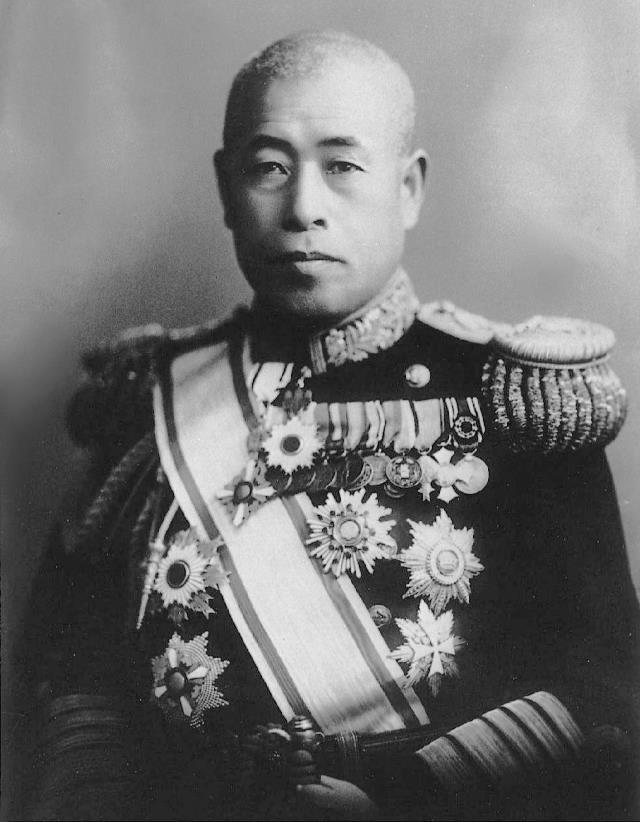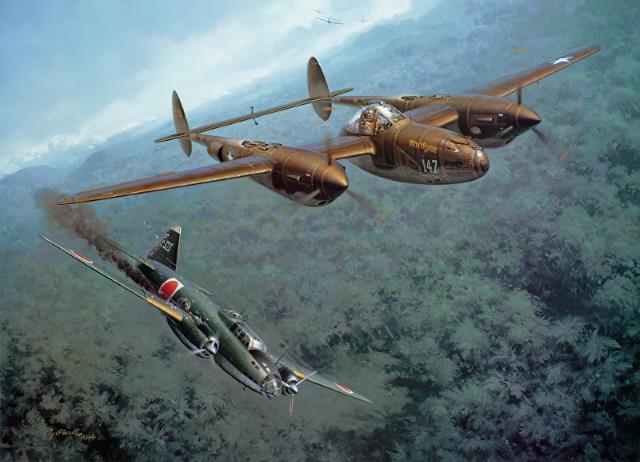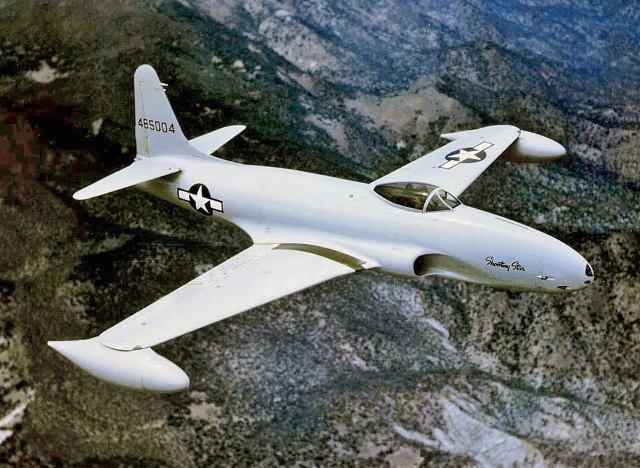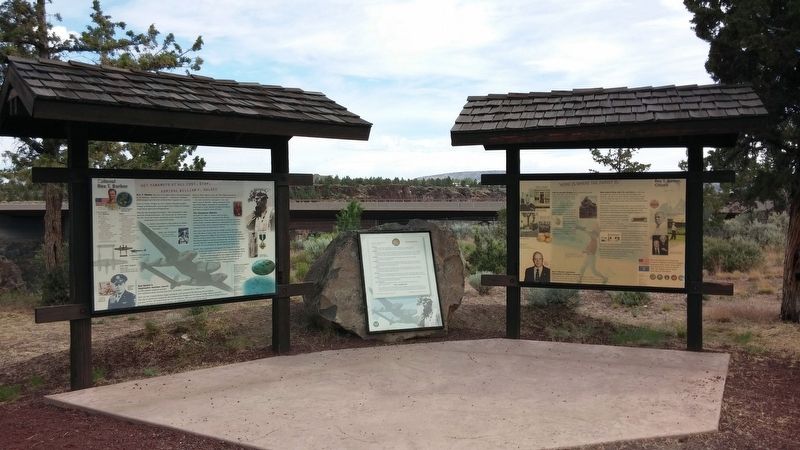This article was first published in the November, 2023 issue of The Homesteader.
2023 marks the 80th anniversary of one of the most remarkable and daring military missions in World War II: A 400 mile low-level flight of 16 U.S. Army P-38 “Lightning” fighter planes sent to intercept and shoot down a Japanese G4M “Betty” bomber carrying Admiral Isoroku Yamamoto, the commander-in-chief of the Japanese Combined Fleet and architect of Japan’s December 7, 1941 sneak attack on Pearl Harbor.
One of the U.S. pilots who volunteered for this potential suicide mission was a 26 year old Central Oregonian, Lt. Rex T. Barber. Barber was a seasoned combat veteran and an
exceptional pilot. He was therefore selected as one of the four pilots in the “Killer Flight” component of the mission. It was Barber who shot down Yamamoto’s plane, an event that many historians believe marked a turning point in the Pacific War, boosting American morale and dealing a severe blow to Japan’s military leadership and strategic capabilities.
Rex T. Barber was born in Culver, Oregon on May 6, 1917. His father, William C. “Bill” Barber, arrived in Central Oregon in 1898 and by 1905 was farming a homestead southwest of Juniper Butte in Jefferson County. In 1910 Bill Barber was one of the founders of the town of Culver, Oregon and in 1914 he married Charlotte King, who had arrived in Culver two years earlier to teach school in Opal City.
As a youngster, Rex worked on his parents’ dryland wheat farm. His father was not very trusting of newfangled technology and in 1926 the Barber family still did not own an automobile. They traveled that year to the dedication ceremony of the Crooked River High Bridge (spanning the Crooked River Gorge along The Dalles-California Highway) in a horse-drawn wagon. This new highway bridge, about 800 feet east of the 1911 Oregon Trunk Railway Bridge, was heralded as a modern engineering marvel. After the ceremony, as 9-year-old Rex hoisted himself back onto the buckboard for the slow ride home, it’s not likely that he could have imagined how he would visit the High Bridge 20 years later in a much more modern and newfangled means of conveyance.
Despite his father’s old-timey ways, Rex was savvy to the increasing progress of technology and became entranced by his Uncle Edgar’s stories of flying a plane during World War I. At the age of 11, desirous to take to the air, Rex made a bedsheet parachute, jumped off a barn and broke an arm.
Rex attended Linfield College and later transferred to Oregon State University. In 1940, with war clouds on the horizon, he enlisted in the Army, intent on becoming a pilot. After graduating from pilot training in late 1941, he was assigned to a fighter squadron in the Philippines. He and his fellow pilots were on a transport ship halfway to Hawaii when news reached them that their first destination, Pearl Harbor, was being attacked by the Japanese. The surprise attack had been planned and orchestrated by Admiral Isoroku Yamamoto.

Yamamoto was a well-educated and complex man from a Japanese Samurai family. He studied at Harvard University in the early 1920s and served as a naval attaché in Washington, D.C., learning fluent English during his stay. He traveled throughout the U.S. and became familiar with the country and its people. He was opposed to Japan’s invasion of China, the multilateral pact with Nazi Germany and fascist Italy, and plans to wage war against the U.S. Despite these views, he was first and foremost a Samurai warrior totally devoted to the Emperor’s wishes, writing “To die for Emperor and Nation is the highest hope of a military man” and “I’m against war with the United States. But I am an officer of the Imperial Navy and a subject of His Majesty the Emperor”.
After the attack on Pearl Harbor, Rex Barber’s transport ship was told to return to San Francisco. As the ship sailed back to the U.S. spirits were low. It’s not likely that he could have imagined that he would be training his fighter plane’s gunsights on Yamamoto’s lumbering “Betty” bomber 16 months later.
Near the end of December 1941 Rex’s squadron shipped out for Fiji where the Allied counter-offensive started building up steam. By December of 1942 his 339th Fighter Squadron was stationed on Guadalcanal in the Solomon Islands chain.
Guadalcanal is a mountainous tropical rainforest, nominally 90 miles long and 25 miles wide, with the highest point towering 7,660 feet above the Solomon Sea. After the Japanese attack on Pearl Harbor, they conquered the Philippines, British Malaya, and the Dutch East Indies. They then rapidly expanded into the western Pacific, invading many islands to build a defensive ring around their newly conquered territories. The Japanese invaded Guadalcanal in May 1942. The Allies were quick to react to the threat now posed to Australia, a mere 1,000 miles southwest of the island, and in August U.S. Marines landed and secured the strategic airfield named Henderson Field after a Marine aviator killed in the Battle of Midway. Fierce fighting continued on the island for the next half year, with over 7,000 U.S. troops killed in combat defending the island between August 1942 and February 1943.
During this time the 339th fighter squadron was busy supporting ground troops, attacking enemy ships, escorting bombers and tangling with the notorious Japanese Mitsubishi A6M “Zero” fighter plane. In mid-April 1943 U.S. naval intelligence decrypted an Imperial Navy message revealing that Admiral Yamamoto was to visit and inspect forward positions around the island of Bougainville, 400 miles north of Guadalcanal.

Yamamoto, to his detriment, was known to U.S. intelligence as a man who stuck to very exacting schedules. His inspection game plan was laid out precisely in the message and the U.S. decided to strike. Yamamoto’s plan was to depart Rabaul (on the island of New Guinea) at 6:00 a.m. on April 18, 1943 in a “Betty” bomber escorted by 6 “Zero” fighters and arrive at the airfield at Ballale Island south of the large island of Bougainville at 8:00 a.m. His complicated schedule then involved visiting various military emplacements via war ships and planes before returning to Rabaul at 3:40 p.m.
The easiest and most predictable leg to intercept Yamamoto was his arrival at Ballale Island. The 400 mile distance to this location was only obtainable by one type of U.S. plane, the twin-engine P-38 Lightning equipped with two “drop tanks” — under-wing bomb-shaped fuel tanks that carried hundreds of gallons of extra fuel that was used at the beginning of a mission and then jettisoned before combat.
Fighter pilot Major John W. Mitchell of the 339th Fighter Squadron was selected as the mission commander of “Operation Vengeance” and set to work planning the interception. This was no easy task. The sixteen P-38s would need to fly 400 miles to the intercept point and, with the available fuel left, would only have about 10 minutes “over target” before skedaddling back to Guadalcanal before running out of fuel. To avoid detection by radar, ships and ground observers they would need to fly 50 feet above the sea at 200 MPH and stay as far away from land as possible. Flying this low and far out to sea would make it impossible to identify visible checkpoints along their two-hour outbound flight. The calculations for each leg’s compass bearings, flight speeds and time would need to be perfect.
A compass, a watch and an airspeed indicator; these are the three apparatuses that the longest and most precise aerial interception ever attempted would rely on. Mitchell estimated that Yamamoto’s flight would average 180 MPH on a straight line from Rabaul to Ballale Island. He wanted to intercept the Japanese above the southern tip of Bougainville as the bomber started its descent to Ballale. Mitchell worked out where Yamamoto would be, time-wise, at the intercept point, and then worked a route back to Henderson Field that the squadron would need to take. These calculations gave Mitchell the exact time the planes would be rolling down the runway, headed for destiny. Even though Yamamoto was scheduled to be escorted by only 6 fighter planes, there were Japanese airbases on the south tip of Bougainville and at the destination of Ballale that were home to hundreds of Japanese fighter planes. The commanders of these bases would no doubt want to impress the Admiral of the Imperial Combined Fleets with an imposing show of force. Mitchell and his men would likely be flying into a hornet swarm of enemy fighters. Deep into enemy territory with barely enough fuel for one quick tussle against Japanese airpower. If this wasn’t the recipe for a suicide mission, nothing was.
The U.S. squadron would consist of four planes in the attack flight and 12 in the cover flight. The attack flight would climb up from the low-level approach and attack Yamamoto’s bomber while the cover flight would zoom up higher to engage the escort fighters. Captain Tom Lanphier was the attack flight leader and Rex Barber was his wingman. By definition, a wingman is a pilot that flies just outside and behind the wing of the leading pilot in order to provide protective support.
On the Morning of April 18, 1943, Captain John Mitchell’s navigation proved to be flawless and on the final leg of the intercept, just as planned, the Zeros and Betty Bombers were sighted over Bougainville. Bombers. Plural. There were two bombers, not one. Lanphier streaked towards the lead bomber with Barber on his wing. As they nosed slightly up towards the bomber Lanphier unexpectedly broke up and away into a steep 45° climb to engage three Zeros diving down at them. This left Rex to continue the attack on the lead bomber alone. He positioned himself 100 feet behind the Betty, so close that the big bomber filled his gunsight. Raking it with bursts from his guns, he saw the engines start smoking as the bullet riddled plane listed to the left and then plummeted into the jungle. Looking back he saw the black smoke rising from the crash site and then caught site of three Zeros diving down towards him from behind. He firewalled the throttles to outrun them as two of his fellow P-38 pilots flew into the fray and scattered the Zeros.
Rex scanned the surrounding area and caught sight of the second Betty fleeing south along the coast towards Ballale airfield with two P-38s on its tail. It was so low that the props were throwing up spray from the ocean. From his vantage point above the fight, Barber rolled into position behind the bomber and helped dispatch it with a well-placed burst. He flew through the resulting explosion just in time to turn towards and shoot down a Zero that was about to pounce on another P-38. With the mission accomplished and fuel running low, the American planes hightailed it back towards Guadalcanal. With the help of a tailwind, Barber was able to make the 400 mile journey without a drop of fuel left in the tanks when he touched down. His P-38, Miss Virginia, had 52 bullet holes in it and bits of the second, exploding, Betty bomber embedded in the leading edge of the left wing.
15 of the 16 planes returned safely. Lt. Ray Hine’s plane was seen trailing vapor on the return trip, but he disappeared forever somewhere over the Solomon Sea.

The mission was a resounding success but the U.S. feared the Japanese would assume that their code had been broken and would immediately change it. The U.S. set up a ruse to dispel this realization by sending subsequent flights into the Bougainville area to make the enemy think this was now a standard patrol mission and that the April 18 patrol had just gotten lucky. Very, very lucky. The Japanese fell for this deception and did not modify their encrypted communications code.
Controversies: Unfortunately this amazingly executed mission was rife with controversies. One of the other pilots claimed that he shot down the plane carrying Yamamoto, even though it was not clear at the time which Betty bomber Yamamoto was in. In the early 1990s an investigation of the crash site confirmed that Yamamoto was in the first plane downed by Barber, given his reports on battle damage to the plane compared with 1943 recovery notes by the Japanese. Sixteen men were tasked to complete this mission and as a unit they succeeded. A more distressing tale is that of the Navy Admiral William “Bull” Halsey denying the nominations for 5 of the pilots, including Barber, Mitchell and Lanphier, to receive the Congressional Medal of Honor. Halsey personally had the nomination “downgraded” to the nation’s second highest award for heroism, the Navy Cross.
After Operation Vengeance Barber was sent back to the U.S. to serve as an Army flight instructor. He volunteered to go back into combat and was sent to fight the Japanese in China. On April 29, 1944 he was shot down by a Zero and bailed out of his plane. As he exited the plane his right arm and left ankle were broken. Two Chinese boys saw him land, helped him hide his parachute and hid him from a Japanese patrol sent to find him. The Chinese concealed him in a village where a doctor tended to his wounds. Chinese resistance fighters smuggled him 250 miles to safety.

Barber stayed in the Air Force after the war and was a test pilot for the first operational U.S. jet, the P-80 Shooting Star. In 1946 he was given clearance to fly one of these to Oregon to visit his family. In this jet he again visited the Crooked River High Bridge he and his family had clip-clopped to 20 years prior, this time swooping his Shooting Star down into the Crooked River gorge and flying under both the railroad and the highway bridges. In 2000, 54 years later, a third bridge would span this section of the gorge, which was dedicated as the Rex T. Barber Veterans Memorial Bridge in 2003.


Rex went on to serve in the Korean War and by the time he retired in 1961 he had achieved the rank of Colonel. In 1947, he married Margaret Smith and they settled in Culver after retirement. Rex was active in the Culver community, serving as mayor, a volunteer firefighter, and sponsoring a Little League baseball team. He resumed farming and later moved to the Terrebonne/Lower Bridge area. He enjoyed reuniting with old military buddies, but many locals had no idea about his heroic war-time deeds. He was just a retired veteran, a good citizen, neighbor, and a farmer. He died in 2001, aged 84, in Terrebonne and was survived by Margaret and his sons Rex Jr. and Richard, his two sisters Mary Elizabeth Clement and Eileen Olson, and three grandchildren. He is buried in the Redmond Memorial Cemetery. Rex Barber Jr. continues to farm some of the family lands in the Lower Bridge area. He said that his dad considered the Operation Vengeance mission just another mission and felt that John Mitchell deserved all the credit for the mission’s success. In an interview with the Madras Pioneer, Rex Junior said “I’m thoroughly convinced that Yamamoto and Dad would have been friends because they both loved to play bridge and were both poker players, gamblers.”


